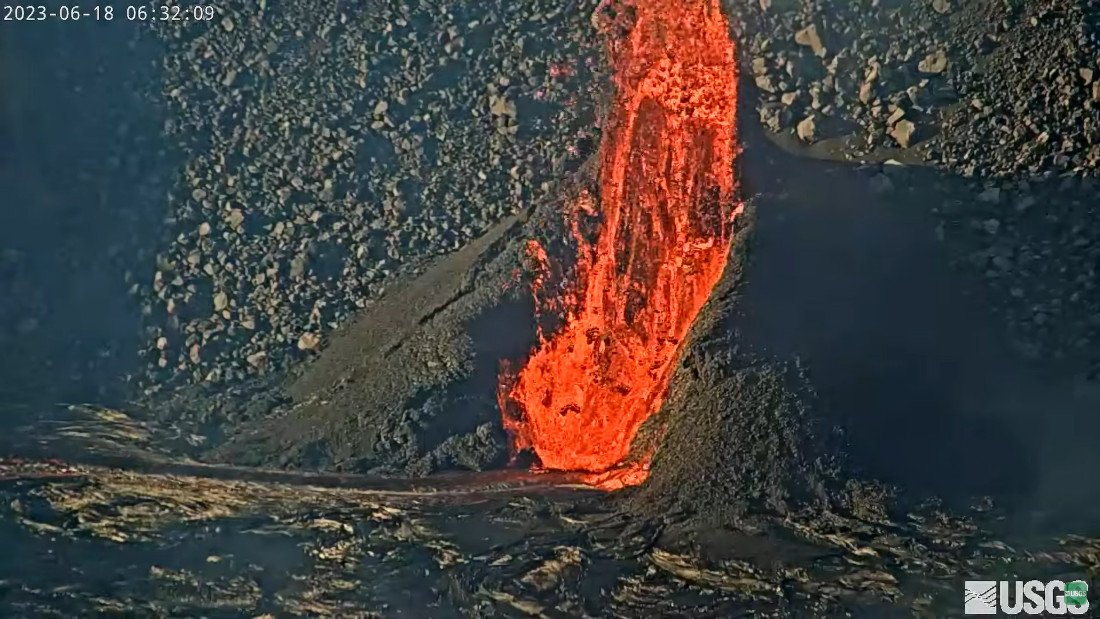(BIVN) – The eruption at the summit of Kīlauea continues, with renewed lava fountaining at the vent on the southwest side of the crater over the past day.
The vent has been putting on a fiery show on the live USGS webcam, launching lava bombs high into the air on a constant basis.
Geologists noted that on Thursday morning, the very top of the spatter cone collapsed. Since then, spattering from the vent has been renewed. Several new lava-streams have effused from the top of the cone, in addition to the lava-tube flow from its base.
In the Saturday update from the USGS Hawaiian Volcano Observatory, it was noted that the fountain has been vigorous. At midday Friday, a crew of geologists estimated that the lava was consistently jetting to a height of at least 10 meters, or 33 feet, with some spatter being thrown even higher and farther.
The scientists say deposits from this fountain have further heightened and widened the surrounding spatter cone. HVO says multiple lava streams from the base of this cone have been feeding into the southwestern lava lake and onto the southwestern-most block from the 2018 collapse within the summit crater.
The surface of the lava lake continues to circulate and is slowly rising. The rest of the crater floor is also uplifting from lava accumulation below the solidified crust.
HVO reports lava circulation has been slowing in the central basin, and the lava-level within it has been dropping relative to the surrounding crust. Lava from the southwestern lava lake has been seen, cascading into the central basin over recent days.
HVO says no active lava has been observed in the northern or eastern portions of the crater over the past day.
The alert level for Kilauea remains at Watch, and the Hawaiian Volcano Observatory continues to monitor the eruption around the clock. All activity is confined to the summit cater within Hawaii Volcanoes National park.


by Big Island Video News6:34 am
on at
STORY SUMMARY
HAWAIʻI VOLCANOES NATIONAL PARK - The USGS webcam is recording remarkable lava fountaining activity at the west vent on the crater wall.